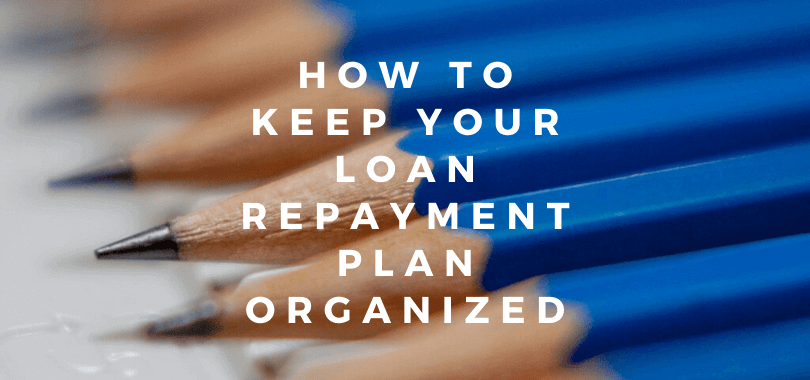By the time you graduate, you may have a few loans with different monthly payments and deadlines. Keeping track of all these dates and amounts can be more stressful than you may imagine. Missing a payment could put you at risk for default, which would then damage your credit score. The only way to prevent this disastrous scenario is by keeping your loan repayment plan organized.
These step-by-step tips will help you:
Step 1: Create a Spreadsheet
A spreadsheet helps you keep all the pertinent information about each loan on one page. This makes it easier for you to see all the details you need about any loan at a quick glance. You can create your loan repayment spreadsheet in Google Sheets or Microsoft Excel.
When creating your spreadsheet you can choose to include any information in whatever format works for you. However, to get a comprehensive overview of your loan details, your spreadsheet should ideally include these columns:
- Type of student loan – Make a note of whether the loan is a federal subsidized, federal unsubsidized, or private student loan.
- Type of loan repayment plan — Is it standard, graduated, income-based, etc.?
- Loan interest rate – This helps you see at a glance which loan is most expensive so you can pay it off first. Along with the rate, also make a note of whether the interest is fixed or variable.
- Monthly payment amount – You need to write this down for each loan so you don’t lose track of any payment. It also helps you determine the total amount you need to set aside to make your payments every month.
- Next due date – After making every payment, make a note of when the next payment is due and highlight the date. This will lower the risks of you missing a due date by oversight.
- Name & contact details of loan servicer – For each loan, write down the name and contact details for the servicer of that particular loan. This will make it easier for you to get in touch with them in case you anticipate any problems.
- Loan date – The loan date is the date that the money was disbursed either to you or your college. This date is important as it may determine some of the loan benefits you’re eligible for.
- Loan status – Is that particular loan in repayment, deferment, or forbearance? Or is it in a grace period?
- Amount to be paid off – Filling out this column will help you see how much you still need to pay off on each loan. When you first write down the numbers, they can be scary to look at. But you’ll feel an immense sense of relief as you see the numbers reduce after every loan repayment.
With all your loan details in one place, you’ll find it easier to stay on top of your student loans. Take a few minutes every month to update the columns to reflect the latest status of every loan.
Step 2: Sign Up for Auto-Pay
If you’ve got a job with a steady income, consider setting up auto-pay. This allows your payments to automatically transfer from your bank account to the lender’s account. Auto-pay is beneficial because your payments are made on time every month.
Another benefit of auto-pay is that it saves you money too. Most private lenders will lower the interest rate by .25% to .50% when you enroll in auto-pay. This adds up to a substantial amount over the life of your loan.
The only thing to be careful about is to make sure you have sufficient funds in your bank account. If you don’t, you will have to adjust your payment amount accordingly.

Step 3: Synchronize your Payment Dates / Consolidate Your Loans
The more loans you have, the more due dates and payment amounts you have to deal with. This can get mind-boggling after a while. To make it less stressful for you, ask lenders if you can change the payment dates. By synchronizing your dates, you’ll have to worry about one due date only.
Another way you can synchronize your payment dates is by consolidating your student loans. Essentially, you combine multiple loans into one, so you only have one interest rate, one monthly payment amount, and one due date. It becomes much easier to manage.
Step 4: Keep all Loan-Related Mail and Documents in One Place
Every loan you took out would have its own set of documents that you received. These may include financial aid award letters, disclosure documents, promissory notes, and others. You may need to refer to these papers sometime. To avoid wasting time searching for a relevant document when you need it, keep all documents in one place. Organize this further by filing the documents associated with different loan servicers in separate folders.
Step 5: Track your student loans online
You can track both, your federal and private student loans online.
Federal student loans can be tracked by logging in to the National Student Loan Data System. You will need your FSA ID and Social Security number to log in to the NSLD system.
This will have the list of all private loan servicers that have reported to your credit bureau.
Step 6: Organize your Login Details
Organizing your login details for each student loan website will save you tons of time and frustration. Make sure you store all usernames and passwords in a secure document.
Organizing your student loan repayment plan may take some effort, but the time and headaches it will save you make it well worth it.



